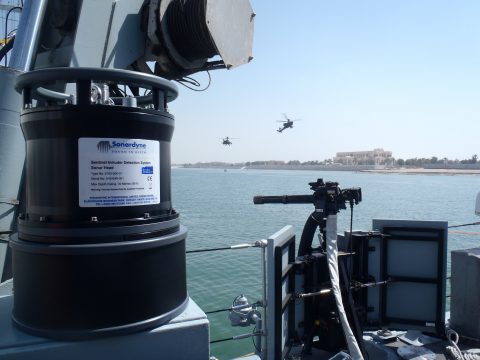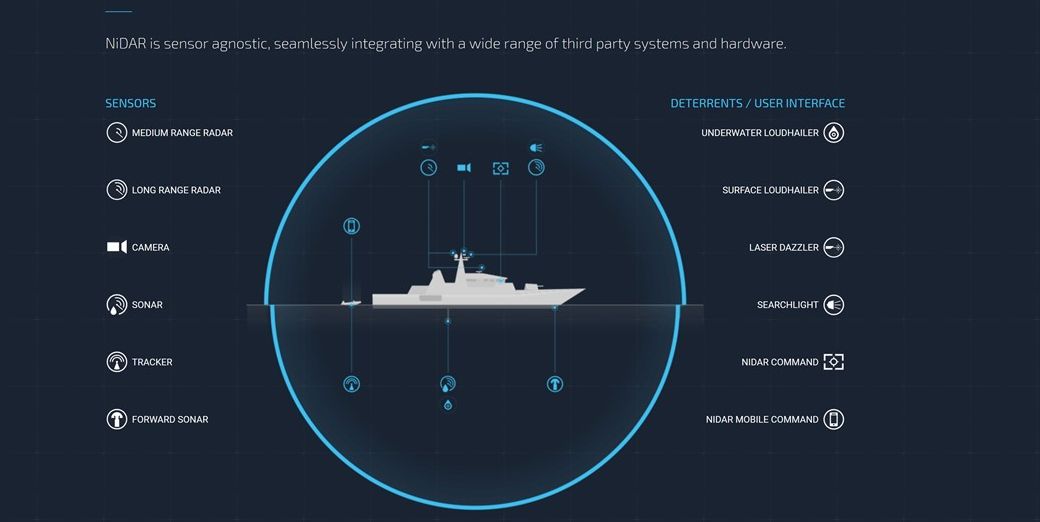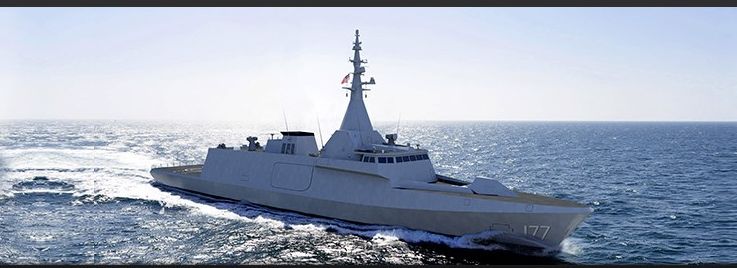SHAH ALAM: With the launch of the first LCS set for Aug. 24, more stuff are now being or have been delivered for the ships of the class. The latest is the underwater monitoring device, which forms part of the ship’s surveillance system.
The surveillance system is called NIDAR by its manufacturer MARSS, a Europe based company, which described it as
an advanced long range surveillance system protecting naval vessels and land-based defence installations from air, surface and underwater approaches.
As part of the NIDAR system, the Sonardyne Sentinel IDS diver and subsurface detection equipment is also installed.


The release from Sonardyne.
Sonardyne has supplied its diver detection sonar technology, Sentinel, for a fleet of offshore patrol vessels (OPVs) under construction in the Far East.
Two ship-fit Sentinels have now been tested and delivered with more to follow, as part of a wider contract to equip each OPV with a fully integrated force-protection capability.
Working with MARSS Group’s NiDAR long range maritime surveillance system, the Sentinels will provide complete underwater domain awareness by detecting unauthorised divers and subsurface vehicles approaching the OPVs and the assets they protect.
Sentinel detects, tracks and classifies underwater threats at up to 1,200 metres range For this contract, the Sentinel sonar heads will be deployed from the OPVs using through-hull technology developed by MARSS. Controlled and monitored by Nidar, the sonars can be lowered automatically to establish an instant, 360 degree monitored zone around large naval ships at anchor, or the entry to a port or harbour.


MARSS first announced the NIDAR contract back in 2015.
The multihull contract, with delivery expected from 2015 to 2022, will include the design, integration, delivery, installation and commissioning of the patented NiDAR™ 360˚ surface and underwater anti intruder security system to protect the Royal Malaysian Navy’s Second Generation Patrol Vessel Littoral Combat Ship fleet (LCS).
“MARSS established a strong working partnership with the Royal Malaysian Navy and Boustead Naval Shipyard to design and deliver a comprehensive world class vessel security system that redefines what can be achieved for maritime domain awareness leveraging Commercial Off The Shelf (COTS) equipment,“ said Rob Balloch, SVP of MARSS Group, adding “MARSS is establishing an engineering presence in Malaysia to support our customers as they implement force protection technologies across their assets.”
NiDAR™ delivers enhanced situational awareness and increased reaction time by integrating multiple sensor and data feeds to generate a long range 360 degree perimeter security shield around a vessel. Operating autonomously 24 hours a day NiDAR monitors, detects, tracks classifies and alerts decision makers to multiple air, surface and underwater threats in the vicinity of a vessel. This provides vessels with the most complete security picture supporting correct decision making and enabling an effective response in critical situations.
As maritime surveillance system is part of the overall LCS self protection system it has not figured in any RMN’s announcement so far.
The LCS is likely the first RMN ship to be fitted with such a system with the Kota Kinabalu naval base becoming the first shore station to be equip with a comprehensive self protection system.
— Malaysian Defence
If you like this post, buy me an espresso. Paypal Payment
View Comments (20)
@ Marhalim,
NiDAR is not actually an underwater surveillance system per se.
It is more of a compiler of surveillance data from various sources, radar, sonar, FLIR, ESM, etc etc, and presents them in 1 situational picture. It can be installed in platforms as small as speed boats to frigates.
Marhalim,
How Many Kilometers for the Sonardyme
Reply
I dont think it will work beyond 1000 meters
Really comprehensive awareness system for our LCS I must say..
No wonder about the overall cost.
Marhalim,
Regarding the RMN's LCS, I'm no engineer but is it possible to increase it's length to, say 120 meters, the extra 9 meters in between the front 57 turret and the bridge (more VLS?) and in between the stack and mast (more NSM @ 30mm RWS?) and hence also more accomodation,fuel and supplies?
Reply
I am no engineer either but I am guessing it can be done. That is almost the size of the Balharra though.
The US Navy is moving out from LCS due to its limited operational usefulness after operating some ships for quite some time now. Maybe their needs could be different but should RMN too find it to be limited in operational capabilities, it would costly and timely for us.
At some point in future, SSMs may not be produced in non-VLS launch models. Considering the long lifespan of the ship, extra space for VLS will be useful.
NSM is a young missile and there is currently no VLS model. But it's possible that the non-VLS model will be dropped in future due to lack of demand.
You don't need 9 meters to accommodate extra VLS unless you wanta a huge number of cells. But the extra space will be useful as a "mission area".
ZekMR,
its a common equipment on luxury yatch and tanker. Certainly not the contributor "about the overall cost".
Mr. m,
What heavy armament and top notch surveillance plus self defence equipment to do with merely a yatch dude,
Enough with overdosed politicking please.
Reply
He is correct, the NIDAR was adapted for commercial purpose, luxury yacht and oil tankers. Its all there on the MARSS website which is linked on the post.
Regarding the overall cost of LCS, its not only NIDAR I am talking about.
I don't think anyone here is arguing about the overall cost of the tldm gowinds with its ASW centric design that has towed sonar arrays. It is only about 30% more expensive than the Kedah class OPV but is bigger, a full fledged frigate that is fully armed and with ASW as its main capability, i don't think many would argue.
With the cost of around usd 460 million, it is around the price of comparable 3000 ton frigates, which is mostly general purpose types with no towed sonar arrays. The only similarly sized frigates with towed sonar arrays are the singaporean formidables.
Compared to most of the current and future 3000 ton frigate designs, the tldm gowinds are among the top designs when discussed among naval enthusiasts. Some other current designs noted are the algerian meko A-200AN, and also the algerian C28A. There are worries from UK navy enthusiasts that their future Type 31 frigate would not be as good as the tldm gowinds, that is how much the tldm gowinds is a benchmark now for light frigate design.